NDFU union farmer
FEBRUARY 2023 • ndfu.org

FEBRUARY 2023 • ndfu.org
NDSU STUDY: Agriculture contributes billions of dollars, more than 110,000 jobs to North Dakota’s economy

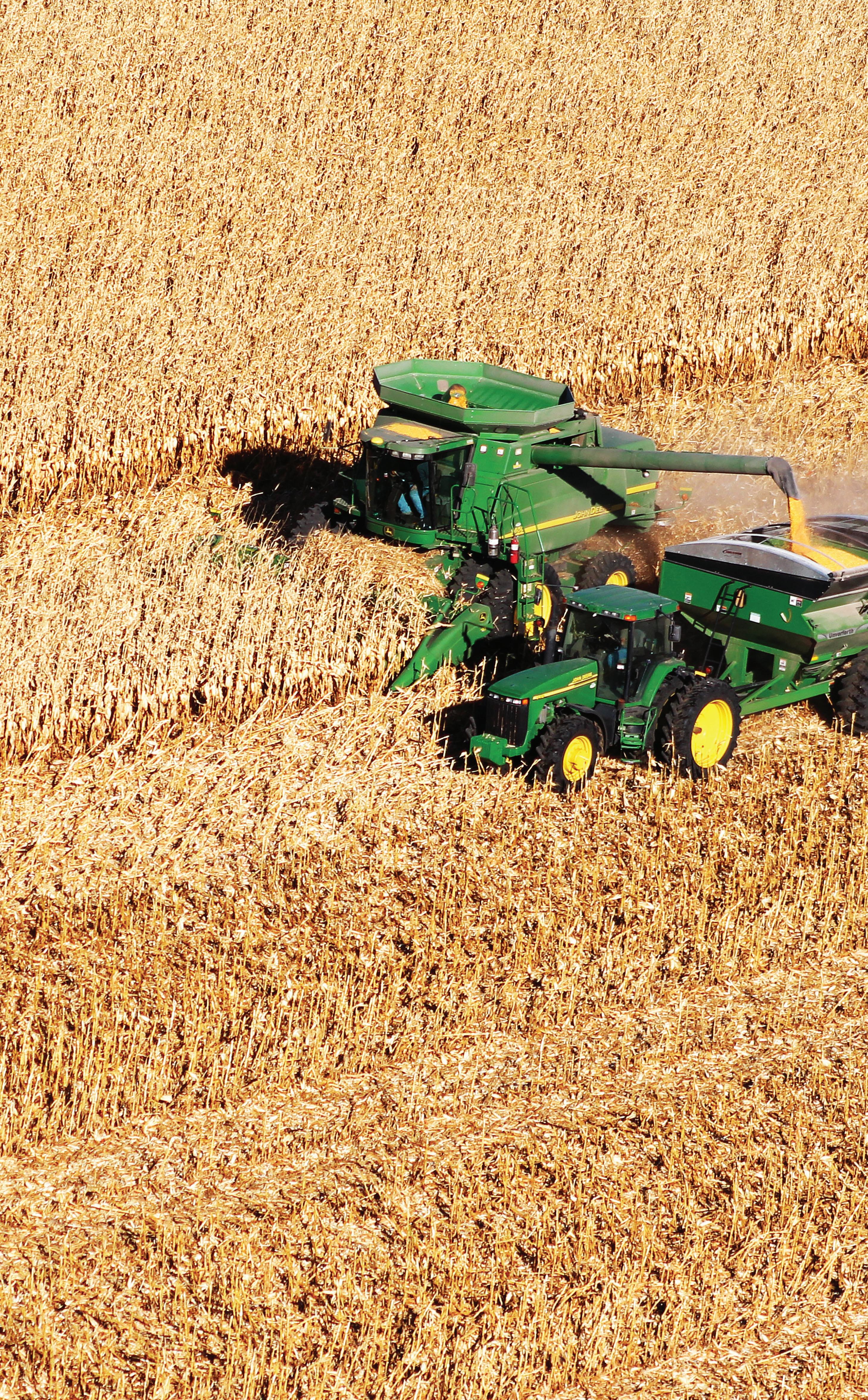

I live in New Salem on a cattle ranch with my husband David. We have four adult children — two boys that are on the ranch with us, and two daughters and sons-in-law that live close enough for us to get to enjoy watching our four grandchildren grow up. I also love to garden and help around the farm when I can. My passion is music. I love to sing and play guitar. I enjoy helping with the music occasionally at St. Pius church in New Salem and singing for the residents at Elm Crest Manor. But most weekends, you will find me on a stage somewhere around North Dakota performing with the band Rock Creek Revival.

I am relatively new to being an insurance agent, though I have dealt with insurance in some shape or form my entire adult working life. I really enjoy helping people find what insurance is best suited for their needs. I am especially passionate about North Dakota seniors. It is so fulfilling to be a trusted
advisor for our senior population when there is so much confusion surrounding healthcare products. Since becoming a District 5 agent with Farmers Union, I feel like I have finally found the missing piece to my puzzle!
 DeeAnn Bueligen Agency Financial Products Agent PH:
DeeAnn Bueligen Agency Financial Products Agent PH:


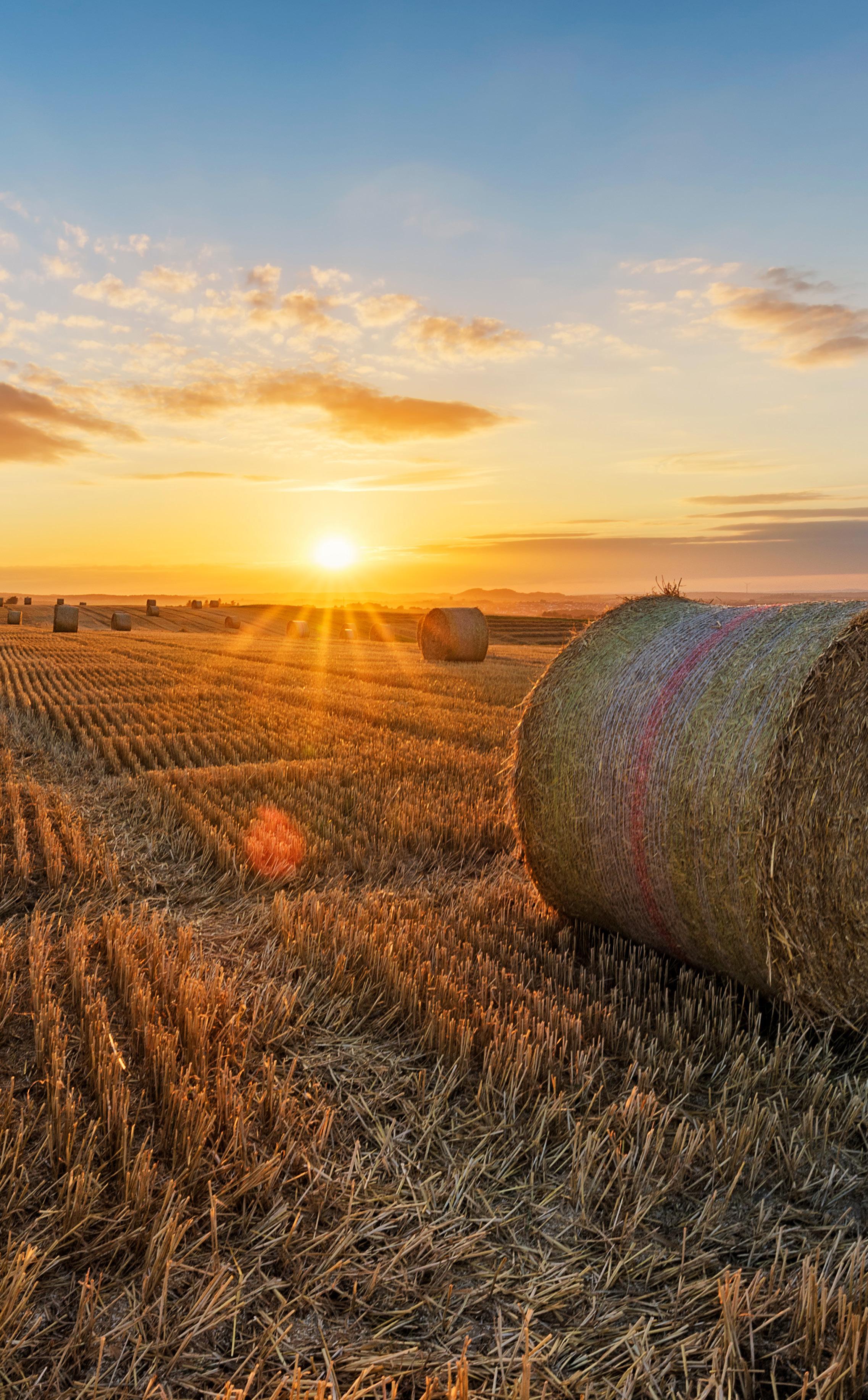

EDITOR’S NOTE: On Jan. 13, the North Dakota House of Representatives introduced HB 1371, a bill that would weaken the state’s corporate farming law.
Attempts to repeal or eliminate parts of the state’s anti-corporate farming law will reappear during this year’s North Dakota legislative session. The law prevents outside investor ownership of farms, ranches, and related operations in North Dakota. The last time legislators passed a change in the law was in 2015. Voters later overwhelmingly rejected the law by nearly 76% of the vote. One could be forgiven for asking what part of “no” did they not understand.
A person could also be forgiven for not understanding why the Catholic bishops of North Dakota oppose repealing or weakening the law. The position is not new. By my estimate, I have testified at least seven times on behalf of the bishops against bills to repeal or weaken the law. My predecessor did as well. Indeed, opposition from North Dakota bishops to corporate farming goes as far back as 1939, and maybe earlier.
As I wrote in an article published in the National Catholic Bioethics Quarterly, Fargo Bishop Aloisius Muench — the only North Dakota bishop named a cardinal — wrote in 1939 that practices such as “investor ownership and the use of wage laborers embraced concepts of ownership and labor more consistent with socialism and unbridled capitalism than the principles of economy proposed by Pope Leo XIII in Rerum novarum and Pope Pius XI in Quadragesimo anno.”
This constancy by our episcopal shepherds on this issue demonstrates that the bishops’ opposition to repealing or weakening the law is not the result of a particular bishop’s personal opinion. Instead, it is something deeply rooted in Catholic doctrine.
Catholic social doctrine contains many principles that lead to this position, but there
Christopher Dodson Executive Director
are several that are particularly relevant.
First is the dignity of the human person. This is the fundamental principle of all Catholic social doctrine. Everything in the social order, whether it is government, economics, business activity, or the community should be centered on the human person.
Second, the dignity of the human person is best protected and fostered within the family. Families play a role that cannot be replicated and that role extends to our economic activity.
Third, the principles of subsidiarity and the dignity of work teach that decisions, whether they are governmental or business, should be made by those closest to the activity itself.
Finally, Christian tradition recognizes that there is something unique about farming and ranching. We can find the roots of this recognition in Sacred Scripture, starting with God’s charge to man to “cultivate and care” for the land. (Gn 2:15). This special nature of farming stretches throughout Scripture and through Catholic teaching.
For these reasons, the church calls farming a vocation, rather than a mere economic activity or business. Indeed, the International Catholic Rural Association and Catholic Rural Life prepared a several-page long “reflection” entitled Vocation of the Agricultural Leader. (Bishop John Folda of Fargo serves on the board of Catholic Rural Life.)
That document explains it this way:
“The farmer, therefore, holds a crucial
place in the common family of man and a unique role in the fulfillment of God’s plan. Through their determined labor, those who work in agriculture cooperate with divine providence and make manifest God’s care for each one of his children. Their work is not merely an effort to meet a basic human necessity. Nor is it just an economic endeavor, reducible to solely questions of profit and cost. Instead, at its core, the commitment to agriculture is a vocation given by God, a unique and privileged way of life. Indeed, of all the occupations undertaken by men and women, the task of “cultivating and keeping the earth” (Gn 2:15)—farming and ranching—reaches to the depths of our relationships with God the Creator, with creation and with all of humanity.”
As Pope Francis said, farming is different because it is “characteristically and fundamentally human.”
The further we move away from family ownership of the land and operation, the
further we move away from that uniquely human connection inherent in God’s charge to cultivate and till the earth. The further we move the decision-making of how to engage in agriculture from the people who do the actual labor, the further we move away from respecting the dignity of labor and respecting the local community. The further we embrace the notion that farming is only about profit, the further we move away from God’s call to steward land and resources for the common good and for future generations.
As the Vocation of the Agricultural Leader puts it, the danger is that the farmer or rancher will become “a mere economic agent of production” rather than someone engaging in a vocation to humbly cultivate and keep the earth and play a critical role in creating an authentic culture of life.
Article reprinted with permission from the North Dakota Catholic Conference.
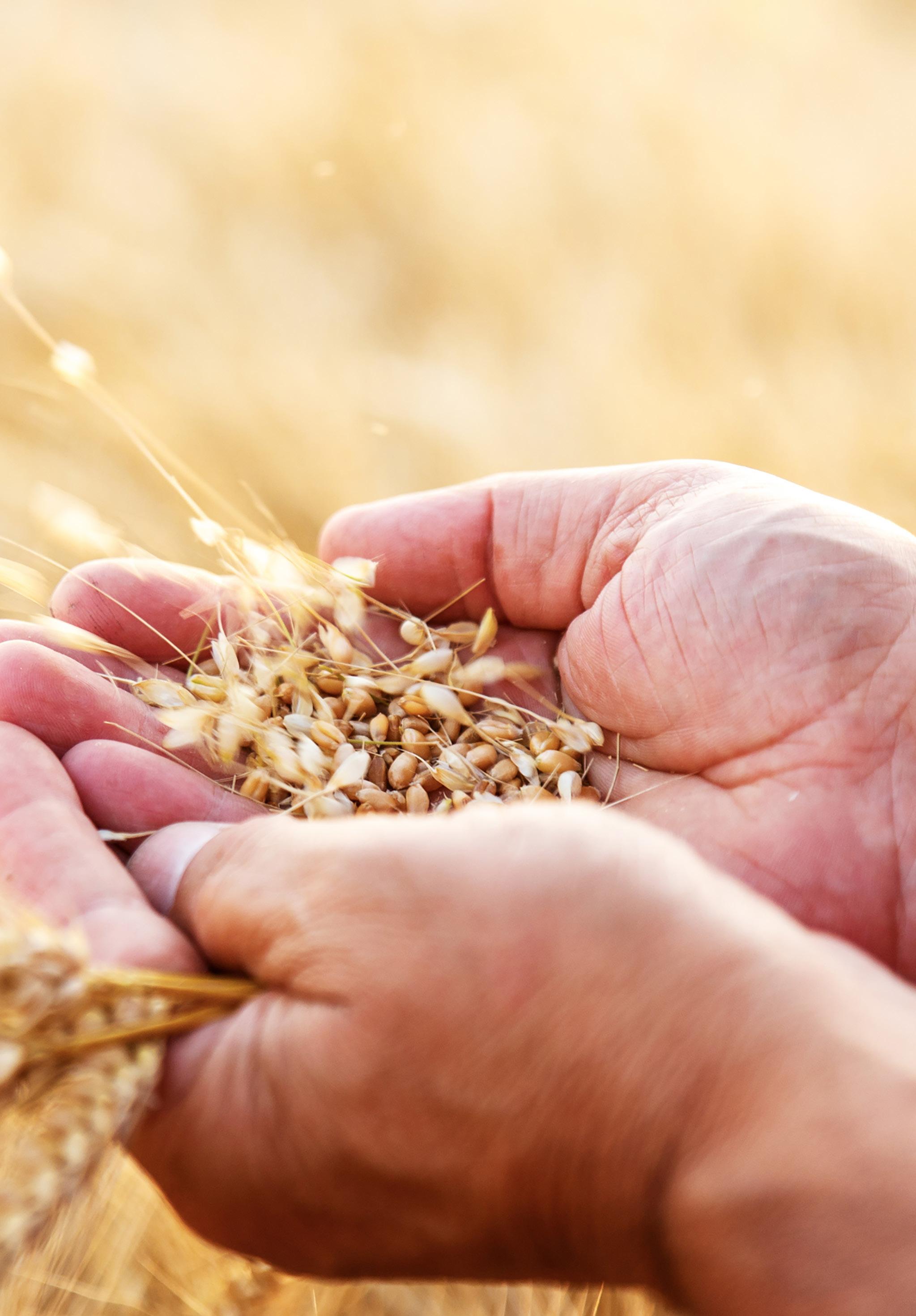
... the danger is that the farmer or rancher will become ‘a mere economic agent of production’ rather than someone engaging in a vocation to humbly cultivate and keep the earth and play a critical role in creating an authentic culture of life.
Christopher Dodson
Executive DirectorNorth Dakota Catholic Conference

(Completed Grades 3-6)
JAMES RIVER
June 12-15
June 27-30
July 5-8
July 17-20
July 24-27
HEART BUTTE
June 19-22
June 26-29
July 5-8
July 18-21
July 25-28
(Completed Grades 7-12)
June 13-17 Heart Butte ( Grades 7-12)
June 20-24 Jamestown ( Grades 7-9)
July 10-14 Jamestown ( Grades 7-12)
July 11-15 Heart Butte ( Grades 7-9)
July 31-Aug 4 Jamestown ( Grades 10-12)
Aug 1-5 Heart Butte ( Grades 10-12)
7th & 8th Grade Lock-In : April 29-30 (Jamestown)
All-States Leadership Camp : June 25-30 (Montana)
Third Year Award Tour : July 17-20 (Twin Cities)

Campers earn a limited edition T-shirt and Cenex gift card for referring friends to camp as well as award trips for youth program participation. Restrictions apply, visit ndfu.org for details.
Approximately 25-30 individuals are hired and trained each year by NDFU as camp counselors, kitchen staff and facility maintenance workers. Applicants must complete an application, interview and pass the background check process.


Register by May 15 and receive a discount on your registration fee!


Millennial Farmer, Zach Johnson, is a fifth generation family farmer from West Central Minnesota. Zach actively promotes agriculture by sharing his day-to day experiences on the family farm. His vision is to build the connection between farmers and consumers. Zach’s mission is to become a national voice for agriculture, provide farmer-to-farmer education and facilitate a collaborative conversation between farmers and the public.

Carbon in agriculture continues to be a hot topic, and North Dakota Farmers Union is inviting producers to learn about opportunities that may await them.

The Evolution Ag Summit is set for Feb. 21 at the NDFU’s state office in Jamestown, and the topic this year is The Carbon Conundrum.
The summit features speakers on the basics of carbon, sustainability commitments, supply chains, renewable fuels, stewardship and carbon sequestration.

Dave Ripplinger, a professor and bioenergy economist for North Dakota State University, will open the day with a discussion called,
“Carbon 101.”
“It’s really an overview of carbon in agriculture and how it’s impacting producers,” Ripplinger said. “We’ll dig into some practical issues. These contracts for farmers are out there and available to them. It’s a real opportunity.”
Ripplinger said he hopes to quell some of the confusion surrounding carbon contracts.
“Informed decisions by North Dakota farmers can lead to a significant amount of revenue if they develop relationships with these companies,” he said. “There are farmers
CONTINUED ON NEXT PAGE
CONTINUED FROM PREVIOUS PAGE
signing contracts and getting large sums of money. These are businesses actively looking for farmers who have been practicing no-till and using cover crops, and those who have interest in doing it for 2023.”
After lunch, Ripplinger is leading a panel on renewable fuels that features a discussion with representatives from Midwest AgEnergy, ADM and Marathon Petroleum.
“We’ll have experts and folks from industry speaking,” said Ripplinger, who is on the planning committee for the event. “(This event) is for those who own and operate farms in North Dakota. They’re the ones faced with this decision, so these are the folks we need to reach.”
The event is being keynoted by Zach Johnson, otherwise known as, “The Millennial
Jake
Kevin
Colin
Nikki
1:35
2:05
2:35
Adam
Kent Engelbrecht, ADM
Paul
Public & Private Conservation Initiatives
Brad Justice, Indigo Ag
Martin Barbre, RIPE
Dana Ashford-Kornburger, NRCS
The Carbon Conundrum: Farmer & Rancher Perspectives
Zach Johnson, The Millennial Farmer Christie Jaeger, Esmond Farmer & Rancher Paul Overby, Wolford Farmer
Jacki Christman, Hettinger Farmer & Rancher
Closing Remarks: Mark Watne, NDFU President
Farmer.” Johnson has grown his audience through social media, reaching consumers around the world and educating them on family farm agriculture. Johnson is also leading a farmer-rancher panel on carbon sequestration to close out the event.
Ripplinger said he hopes growers leave the event with a full understanding of the potential benefits — financial and otherwise — from carbon sequestration.
“This is a one-day opportunity for farmers and ranchers to catch up,” Ripplinger said. “I’ve been working in this space for over a decade. We’re getting into the true start of this. Now is the time for folks to come and make those connections and get educated on this. The best way to do that is to have them with us in person.”
To register for the event or for more information, visit NDFU.org.

Ranchers in North Dakota have been observing calves showing signs of coccidiosis this fall and winter, according to Gerald Stokka, North Dakota State University Extension’s veterinarian.
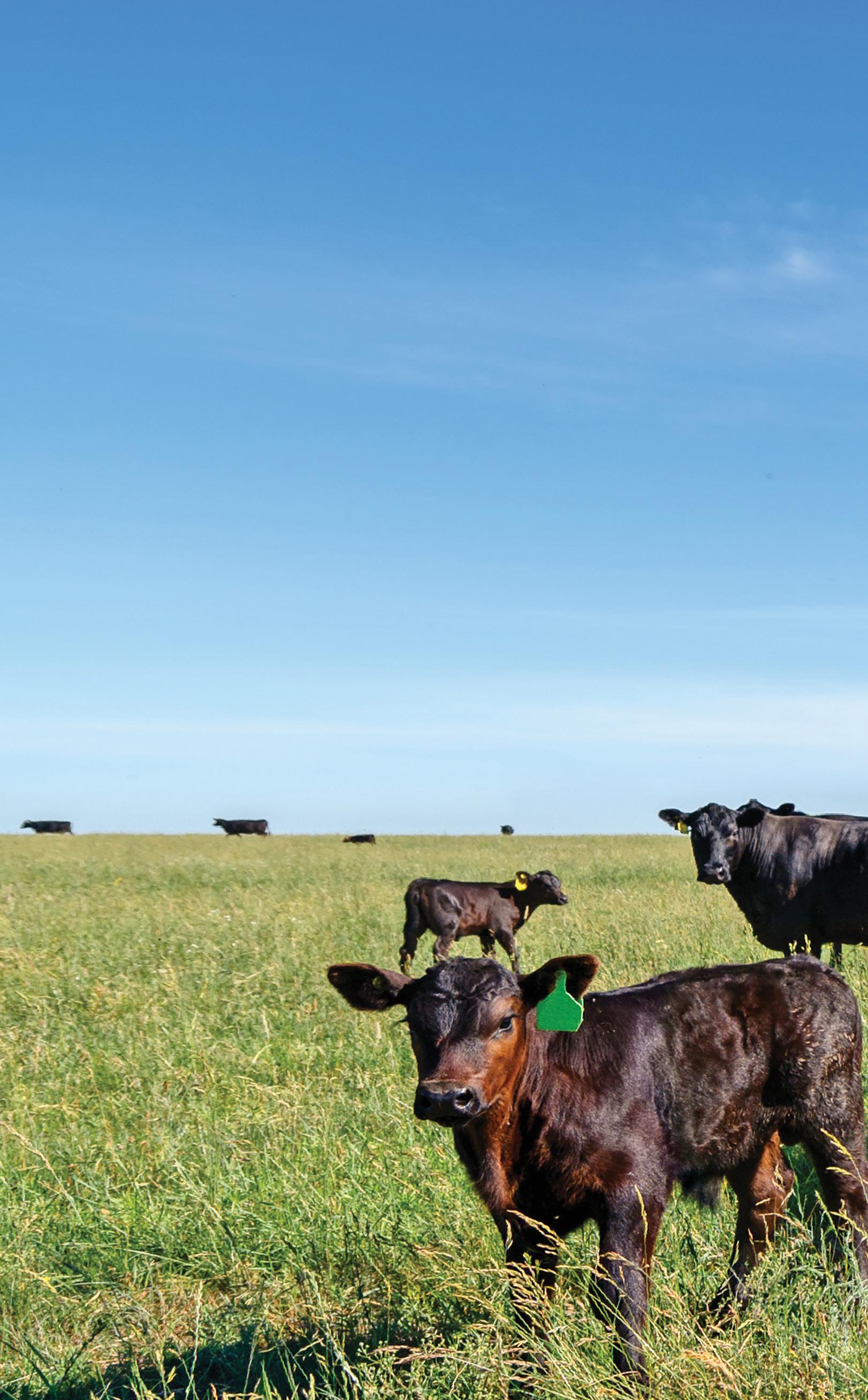
Coccidiosis is an intestinal disease that affects several different animal species. In cattle, it may produce clinical symptoms in animals from one month to one year of age, but it can infect all age groups.
Coccidia is a protozoan parasite that has the ability to multiply rapidly and cause clinical disease.
“Coccidia are very host-specific; that is, only cattle coccidia will cause disease in cattle,” Stokka said. “Other species-specific coccidia will not cause disease in cattle.”
The major damage to calves is the result of the rapid multiplication of the parasite in the intestinal wall and the subsequent rupture of the cells of the intestinal lining.
Several stages of multiplication occur before the final stage, the oocyst (egg), is passed in the feces. Oocysts are extremely resistant to
environmental stress and are difficult to remove from the environment completely. Oocysts must undergo a final process called sporulation before they are infective again.
Oocysts frequently contaminate feed and water. When the sporulated oocysts are ingested by other animals, they start their life cycle over in the new host.
In weaned calves, clinical signs of coccidiosis may develop following stressful events such as weather changes, or if the calves are in conditions such as being fed and eating off the ground. The conditions this fall and winter, with the ground not frozen under the snow, may have increased the risk of coccidiosis infections.
“Symptoms or signs of coccidiosis will depend on the stage of the disease at the time of observation,” said Dr. Stokka.
In general, coccidiosis affects the intestinal tract and creates symptoms associated with it. In mild cases, calves only have a watery
diarrhea, but in most cases, blood is present in the feces. Straining, along with rapid dehydration, weight loss and anorexia (off feed), may be evident.
Animals that survive for 10 to 14 days may recover; however, permanent intestinal damage may occur. The lesions associated with coccidiosis that are found after death generally are confined to the cecum, colon, ileum and rectum.
Laboratory findings should be correlated with clinical signs for a diagnosis because other infectious diseases such as salmonella and bovine viral diarrhea virus also may lead to blood in the stool, Stokka noted.
The susceptibility of animals to coccidiosis varies.
“Coccidiosis frequently is referred to as an opportunist, which is a disease that will develop when other stress factors are present or when exposure to the oocysts is overwhelming,” Dr. Stokka said.
“The life cycle of coccidiosis in calves is approximately 21 days,” he added. “This means that if a weaned calf is showing signs and symptoms of coccidiosis at 3 weeks after weaning, then the calf was exposed to the oocysts at weaning time. The logical conclusion is that weaning pens are contaminated.”
Infected animals must be treated for the infection and to correct dehydration. Producers should select the proper drugs in consultation with their veterinarian. Sulfa drugs and a
therapeutic dose of amprolium are available to treat coccidiosis. Antibiotics may be necessary if secondary bacterial infections are suspected. Products also are available for treating the entire group of calves, Stokka said. Treatment and prevention are most effective when started early.
Dr. Stokka and Karl Hoppe, Extension livestock systems specialist, suggest these steps to prevent coccidiosis:

• Move weaning or receiving pens to a clean area free of contamination.
• Increase the amount of space per calf at weaning.
• Feed an additive that can reduce the presence of coccidia.
“Feeding a coccidiostat (decoquinate or amprolium) or an ionophore (monensin or lasalocid) at weaning will reduce the risk of disease,” Hoppe said. “Be sure to follow label claims because each product will have slightly different label claims.”
“Feeding an ionophore to the cows for reducing the overall coccidia parasites present in the environment also has the benefit of improving feed efficiency,” he added.
Article courtesy of NDSU Ag Communications
March 15 is the deadline for the annual farm program enrollment decision. This year there is not much of a decision. With high commodity prices, Price Loss Coverage (PLC) payments will likely be zero for most crops. Agricultural Risk Coverage (ARC-CO) payments are also expected to be minimal. This article provides an overview of how ARC and PLC payments are calculated.
Farmers can elect coverage and enroll in ARC-CO or PLC on a crop-by-crop basis for
each Farm Service Agency (FSA) farm unit. Farmers can also choose ARC-Individual for the entire farm for the 2023 crop year. Although election changes for 2023 are optional, enrollment by signed contract is required for each year of the program. If an election is not submitted by the deadline of March 15, the election defaults to the current election for crops on the farm from the prior crop year.
Commodity prices remain higher than reference prices, county yields are average or above
Commodity prices fall to below reference prices, county yields are average or above
Commodity prices remain higher than reference prices, county yields are average or above 1 2 3 4
Commodity prices fall to below reference prices, county yields are below average

ARC-CO, PLC, and ARC-IC are available for commodities covered under Title I of the a a a a
a a a a
Farm Bill. These covered commodities include barley, canola, large and small chickpeas, corn, crambe, flaxseed, grain sorghum, lentils, mustard seed, oats, peanuts, dry peas, rapeseed, long grain rice, medium and short grain rice, safflower seed, seed cotton, sesame, soybeans, sunflower seed and wheat.

ARC-CO program payments are triggered when the actual county crop revenue of a covered commodity is less than the ARC-CO guarantee for the crop. The actual county revenue and the revenue guarantee are based on county level yield data for the physical location of the base acres on the farm and tract.
PLC provides income support payments on historical base acres when the national marketing year average price for a covered commodity falls below its effective reference price. PLC effective reference prices are calculated to allow upward fluctuation of reference prices during periods when historic price averages are higher than the established reference price for the covered commodity. The effective reference price is the higher of:
• The statutory reference price stated in the 2018 farm bill; or
• 85% of the five-year Olympic average price, but capped at 115% of the statutory reference price. (Note: The Olympic average price excludes the high and low market year average prices from the 5-year period.)
Another option is the Individual Agriculture Risk Coverage (ARC-IC) program. Payments are issued when the actual crop revenue for all covered commodities planted on the ARC-IC farm is less than the ARC-IC guarantee for those covered commodities. ARC-IC uses producer’s certified yields, rather than county level yields.
NDSU Extension has developed an online tool to aid farmers in making this decision. NDSU’s ARC/PLC calculator helps producers estimate payments for farms and counties. The tool can be found at https:// www.ndsu.edu/agriculture/ag-hub/ag-topics/ farm-management.
Contact your local FSA office to make your ARC/PLC election. For more information on ARC and PLC, farmers can go to the FSA website at https://www.fsa.usda.gov/arc-plc or contact their local FSA office.
Article courtesy of Ron Haugen, NDSU Extension


New soybean crushing plants near Jamestown and Casselton. Canola being approved as a feedstock for renewable diesel. A possible move to year-round E15.
It’s safe to say value-added agriculture is trending up in North Dakota, and measuring its impact is important, according to North Dakota State University research scientists Dean Bangsund and Nancy Hodur.
The state received a good look in December, when the two published a study on the economic contributions of agriculture to North Dakota.
The results? A contribution of nearly $31 billion to the state’s
economy to go with over 110,000 jobs. North Dakota Farmers Union was one of 11 agriculture groups to sponsor the study.
“It’s valuable for the public to really understand the breadth of contribution this industry has to the state,” said Bangsund, who has been conducting studies for over 30 years. “You can’t travel North Dakota without seeing agriculture, even in our bigger cities where we have a number of processing facilities.”
The numbers speak for themselves: 28.4% of the state’s gross business volume, 19.2% of all employment, 20.6% of labor
income, 24.2% of state gross product and 9% of total state and local government revenues.
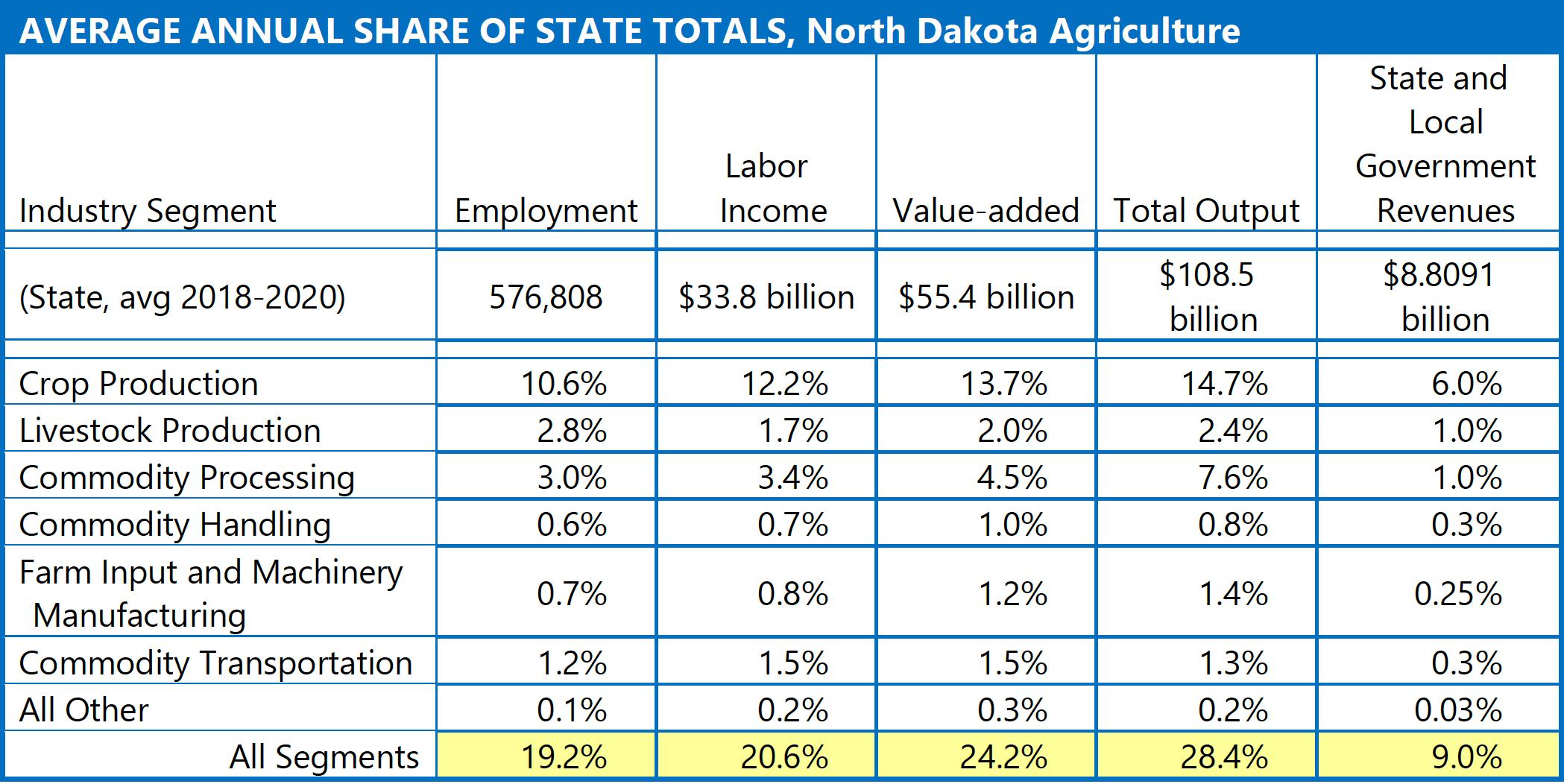
“When you look at 30.8 billion in total economic contribution and over 110,000 jobs — it’s a big deal in North Dakota,” Hodur said. “It really articulates that the industry is much more than just the farm gate. There’s so much interwoven, not just in our rural communities but in our cities. It’s not just crops and cows. You’ve got transportation, value-added and more. This just helps demonstrate that and tell that story.”
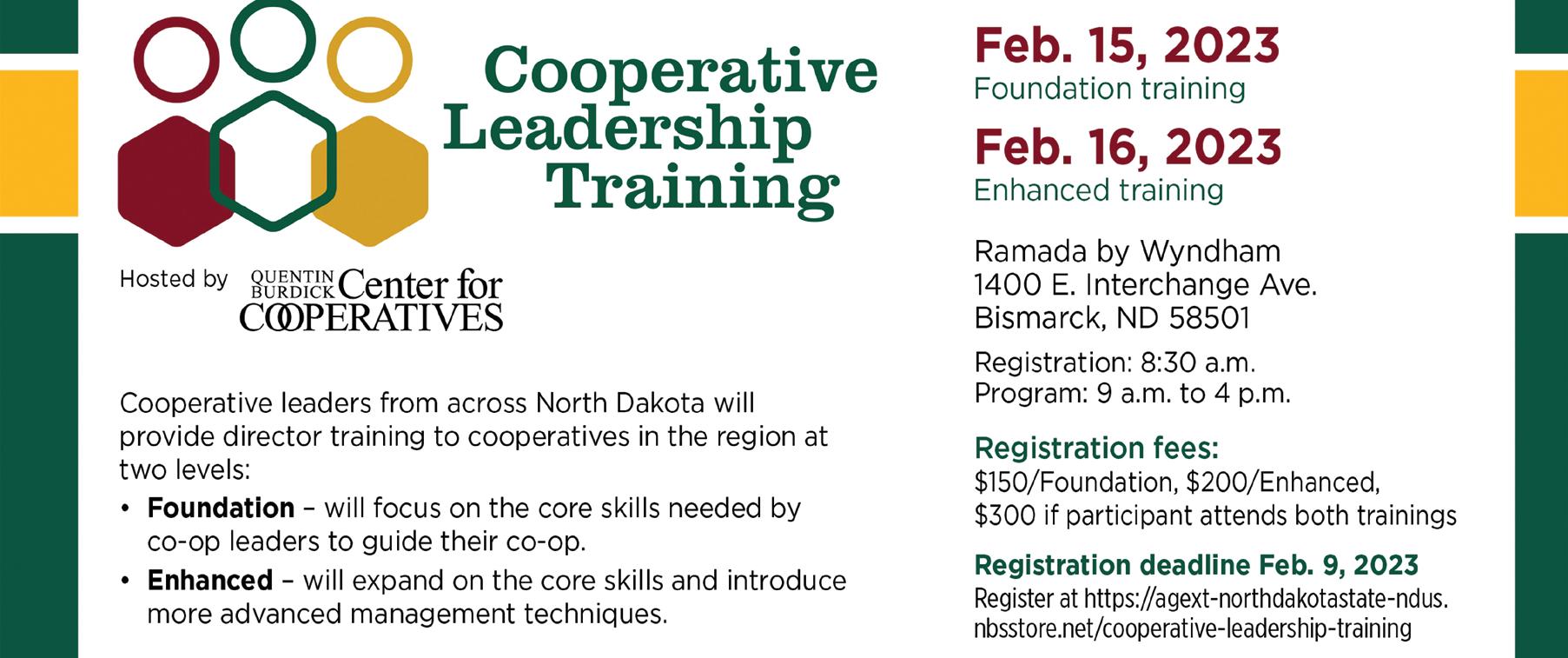
While crop production makes up 52% of gross business volume, value-added processing accounts for 27% — a number sure to grow with expansion in the state. ADM’s $350 million soybean crushing plant is underway in Spiritwood, while North Dakota Soybean Processors is building a soybean crushing plant in Casselton.
Hodur — who’s been doing economic studies for 22 years — said it’s especially important for measuring value-added growth over the next
decade.
“It provides a baseline with which we can measure changes going forward,” she said. “It’s very good possibility that the value-added component is going to see some changes in the next few years. Now we’ve got a baseline and a tool and a methodology with which to measure that.”
Said Bangsund, “There are some exciting things being discussed with processing. I think the industry will want to take another look at this, whether that’s in a few years or around the corner. There’s a lot of value here.”
Both researchers said the study is far more comprehensive than past ag studies in North Dakota, but there are still numbers for which they’d like to see a few more details, particularly from agribusiness.
“Farm equipment (numbers) from implements is one area where we struggled a little bit,” Hodur said. “At the same time, I think that’s probably a fairly small hole.”
Bangsund said he hopes that improves going forward as more in the industry understand the

value of the
“Sometimes, there’s a little confusion on exactly what we’re asking for,” Bangsund said. “We’ve found as we repeat this process that there gets to be a stronger connection between understanding the value of providing good financial information and how it’s used in the studies. So, this is the first time that we came knocking on the door of a lot of firms and companies in North Dakota. We expect to have some of these challenges the first time through.”
Making sure the information is understood and disseminated correctly is also important,
which is why the two researchers said not all of the information from the study has been released.
“We did work hard to make sure that the initial documents didn’t pull people through the processes so much, so they can receive the information in a way that’s easy to digest,” Bangsund said. “They’re more about showing the end result. But there are some commodities that we’ll have additional information on and that’ll be forthcoming. It’s a lot of the detailed information that industry will want to see.”

WATNE: State should continue to invest funds to support processing, other value-added opportunities

North Dakota Farmers Union financially participated in a study conducted by North Dakota State University on agriculture’s economic contribution to North Dakota.
The study reinforced the huge role agriculture plays in the state’s economy. The total economic contribution amounted to $30.8 billion, which includes $18.8 billion of direct output and $12 billion of indirect output. This means that agriculture’s share of the state’s economy is 24.2% of added value.
The study showed that 43,060 direct jobs and an additional 67,420 secondary jobs were due to agriculture. This level of jobs is equal to 19.2% of all employment and 20.6% of the total labor income. With the strong job market, young adults with agriculture degrees have huge opportunities for employment in North Dakota.
If we look at the segments of where the economic contribution comes from, the largest share is in crop production equal to 52%. Commodity processing makes up 26%. Livestock production reflects 8%. The remaining segments are farm input, machinery manufacturing, commodity transportation, commodity handling and “other” equaling 14%.
The other groups that supported the study include Ag Products Utilization Commission, American Crystal Sugar, Minn-Dak Farmers Cooperative, ND Corn Utilization Council, ND Dry Bean Council, ND Soybean Council, ND Stockmen’s Association, Northern Canola Growers Association, Northern Pulse Growers association and the Red River Valley Sugar Beet Growers Association.
Your organization believes that agriculture is the primary driver for North Dakota’s economy and will be into the future. Food and energy production will be necessary to meet the ongoing demands of a growing population. To this belief, we invest in projects to enhance, or add value to family farm income. These enhancements and value-added projects can be renewable fuels, rendering products, fertilizer plants, restaurants, transportation, all types of processing and others. NDFU is participating and investing to support and grow our agriculture economy in the state.
NDFU will be pushing this legislative session to have our state further invest in opportunities that will enhance family farm and ranch agriculture. We have a long list of processing plants being considered in the state and many other opportunities surrounding renewable energy development. It will take innovative minds to take advantage of all the potential we are seeing as opportunities are being created. We will need feasibility dollars, grants, logistics development, and other tools to attract these businesses. Our state has the capacity financially to support these efforts. Keep in mind, this is investing in our long-standing agriculture commitment to North Dakota’s economy.
NDFU is starting to develop a program to bring ag leaders, North Dakota leaders and new business concepts to the table. We hope to develop ideas and concepts to grow and expand our agriculture economy. It is our priority to invest time, dollars and effort in agriculture, our long-standing economic driver.

Snow, ice and cold make operating a tractor more difficult and more dangerous, according to Angie Johnson, North Dakota State University Extension farm and ranch safety coordinator.

"Tractor operators should adjust their tractor maintenance and driving practices for winter conditions from start to finish," said Johnson. "Problems and hazards are amplified by ice, snow and cold temperatures."
Diesel tractors require special care in the winter, as the diesel fuel needed in the wintertime must be rated for cold temperatures. Summer blended diesel fuel (#2 diesel) contains paraffin wax. Paraffin wax will become solid once temperatures reach around 32 degrees Fahrenheit. As the wax solidifies due to cold temperatures, the wax solids can become large enough to clog filters, causing the tractor to ”gel up.”
Be prepared for winter conditions by using the following tips:
• Use winter grade diesel, such as #1 diesel, to prevent your tractor from gelling up.

• Keep emergency diesel fuel additives on hand, as well as replacement fuel filters, in case your tractor becomes gelled during a winter storm or cold temperatures. Emergency additives can be found at your local auto parts store or farm store.
• Always maintain at least half a tank of fuel in your tractor to prevent fuel line freezing and gelling.
• In preparing for a winter storm, fill tractor fuel tanks full in case of power outages. Most fuel tanks on farms have electric pumps, meaning you will not be able to fill your tractor’s fuel tank during a power outage.

“In winter conditions, using a 110-volt block heater can be critical to whether or not your tractor will start in cold conditions,” said Johnson.
A block heater warms the engine block of the tractor during cold temperatures so that
the tractor’s engine will start. The tractor’s age, make and model will dictate how long to plug in the tractor’s block heater in order for the tractor to start. Newer model tractors may also have glow plugs, a heating device that aids in starting the tractor’s engine.
Talk to your local implement dealer or mechanic to determine how long your tractor’s block heater should be plugged in before starting the tractor.
Read your tractor’s operator manual to understand your tractor’s glow plug requirements, as some tractors may have a switch or a wait-to-start light.
Consider having a spare block heater cord on hand, as cords can easily burn out or become damaged if improperly pulled when unplugging.
Once started, allow the tractor to warm up before driving it. Warming up the tractor allows the engine and fluids to function properly and helps with overall longevity of your tractor.
In the event of a power outage, you may need to plug your tractor’s block heater into a fuel-powered generator before starting.
Checking antifreeze is also important. You should test your antifreeze using an antifreeze tester to determine it can withstand subzero temperatures and if any antifreeze fluid needs to be added. Check your tractor’s operating
manual to determine what type of antifreeze you should use in your tractor.
Winter conditions will also challenge your tractor’s batteries. If you notice your tractor’s batteries are becoming weak when starting your tractor, replace the batteries. Trying to jump start or boost your tractor’s batteries multiple times, especially in winter conditions, can be dangerous and result in serious injury from a potential battery explosion.
Cold temperatures can cause lower air pressures in tractor tires.
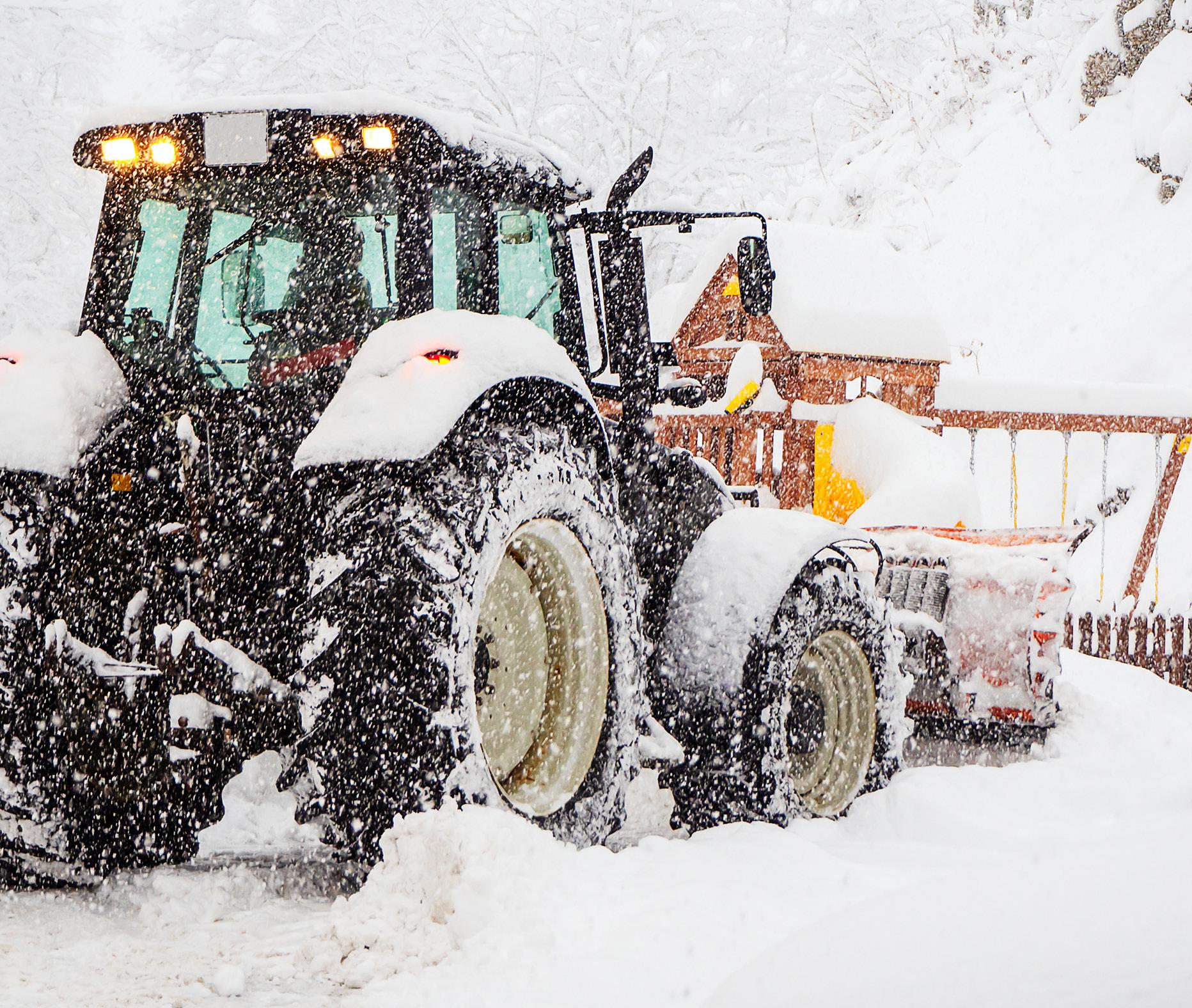
Make sure your tires are properly inflated for winter use by reading the psi ratings listed on the sidewall of the tire or in your tractor’s operators manual.
Make sure tractor tire treads are not worn or heavily cracked, as winter conditions can reduce your tractor’s traction ability.
If using a two-wheel drive tractor, consider using tire chains on the rear wheels, to allow more traction for your tractor in slippery conditions.
When using a loader bucket with grapple forks or bale spear to carry feed, such as a round bale, or the loader bucket for moving heavy snow, always keep the load and speed low when traction is poor. Slippery conditions
increase the hazard of maneuvering elevated loads on a loader tractor.
Depending on the make, model and year of your tractor, tractor steps can be very hazardous, especially with ice and snow buildup on each step. Slips, trips and falls are common farm and ranch injuries that can be prevented. Build these habits before climbing each step:
Remove any snow and ice buildup from the steps.
Use the handrail to maintain three points of contact at all times when climbing.
Wear adequate shoes that have good tread to prevent your foot from slipping, especially if the steps are worn down or icy.
When dismounting the tractor, never jump down. Always go down the steps facing the equipment, using three points of contact and the handrails for support.
Always wear or bring clothing and winter gear that is appropriate for the weather outside, not the climate inside the cab. If the tractor gels up, you may need to walk back and will need the right outerwear for the weather.
Article courtesy of NDSU Ag Communications

the Fourth children’s book from North Dakota Farmers Union
$16.95 plus tax
Dusty learns about generations of family and equipment on their farm, and the latest in soil technology. Find out how Dusty makes Gramps a new thingamajig for his tractor to save the day!


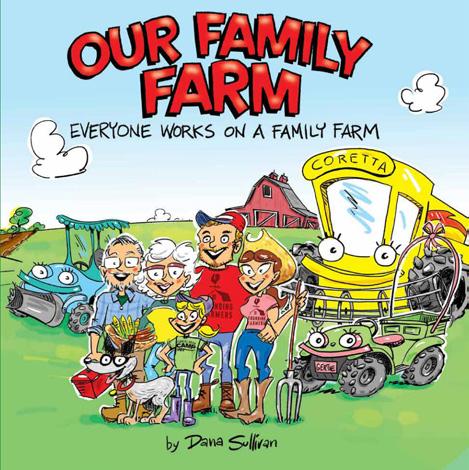


All living things require nutrients for survival. The most basic of these are protein, energy, vitamins, minerals and water. Testing forage and feed for nutrient quality helps ranchers ensure they are meeting nutrient requirements for optimum beef cattle performance.
“Compared to a human, a beef cow needs to be supplied with a massive amount of nutrients daily to meet requirements for movement, fetal growth, temperature maintenance, digestion, milk production and other functions,” said James Rogers, North Dakota State University Extension forage crops production specialist.
Young cows require additional nutrients for body growth until they reach maturity. Thin cows require additional nutrients to restore body condition. For beef cowherds, forages (grazed pasture and range, hay, silage) are the backbone for meeting this nutrient demand.
Protein content is the first nutrient ranchers must consider in forage. In the rumen of the cow, bacteria require protein in order to efficiently and completely digest forage. If protein levels are not meeting animal requirements, forage intake is reduced and forage digestion can be incomplete, which limits intake of other nutrients such as energy.
Once protein requirements are met, the focus should be on meeting the cow’s needs for energy, which is required by the cow in the largest volume of all nutrients and often gets overlooked, says Rogers. A common term for expressing the energy requirement of the cow is total digestible nutrient (TDN). TDN requirements can be expressed as pounds per day required or as a percentage of the daily dry matter intake.
“TDN works well for ration balancing and for describing energy content of a feed or forage,” said Rogers. “However, it does not give you a real feel for the volume of energy required by a beef cow. A more descriptive term is a calorie, which describes the amount of energy required by an animal or the amount of energy supplied by a feed source.”
In beef nutrition, net energy for maintenance (NEm) and/or net energy for gain (NEg) describes these values. NEm describes energy requirements for daily cow maintenance. If any energy is left over after maintenance needs are met, it goes to NEg.
The unit of measurement for net energy in beef cow requirements is a megacalorie (Mcal). Human energy needs are also expressed in calories but in kilocalories (kcal). A human male needs 2,700 kcal each day or 2.7 million calories per day (1 kcal = 1,000 cal). By comparison, a 1,200-pound cow in the middle third of pregnancy requires 9.1 Mcal/day for NEm. A megacalorie is 1 million calories, meaning 9.1 million calories must be supplied every day to meet this cow’s maintenance energy requirements.
“When this same cow moves from the middle third to the last third of pregnancy, the NEm jumps from 9.1 Mcal to 12.0 Mcal daily,” says Rodgers. “That is 12 million calories per day just for maintenance or roughly 1,091 cups of salad, assuming that a cup of salad contains 11,000 calories.”
Article courtesy of NDSU Ag Communications
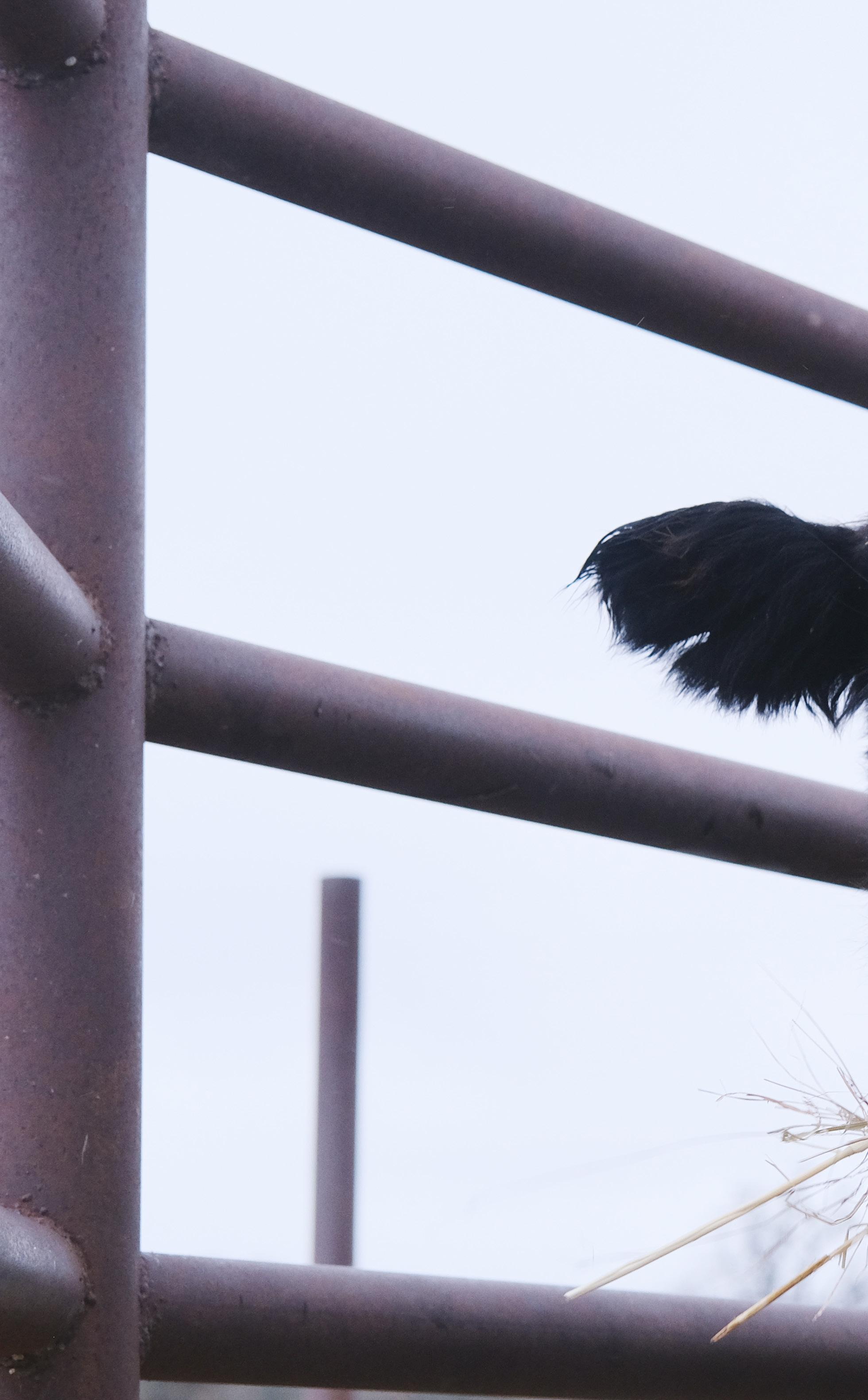
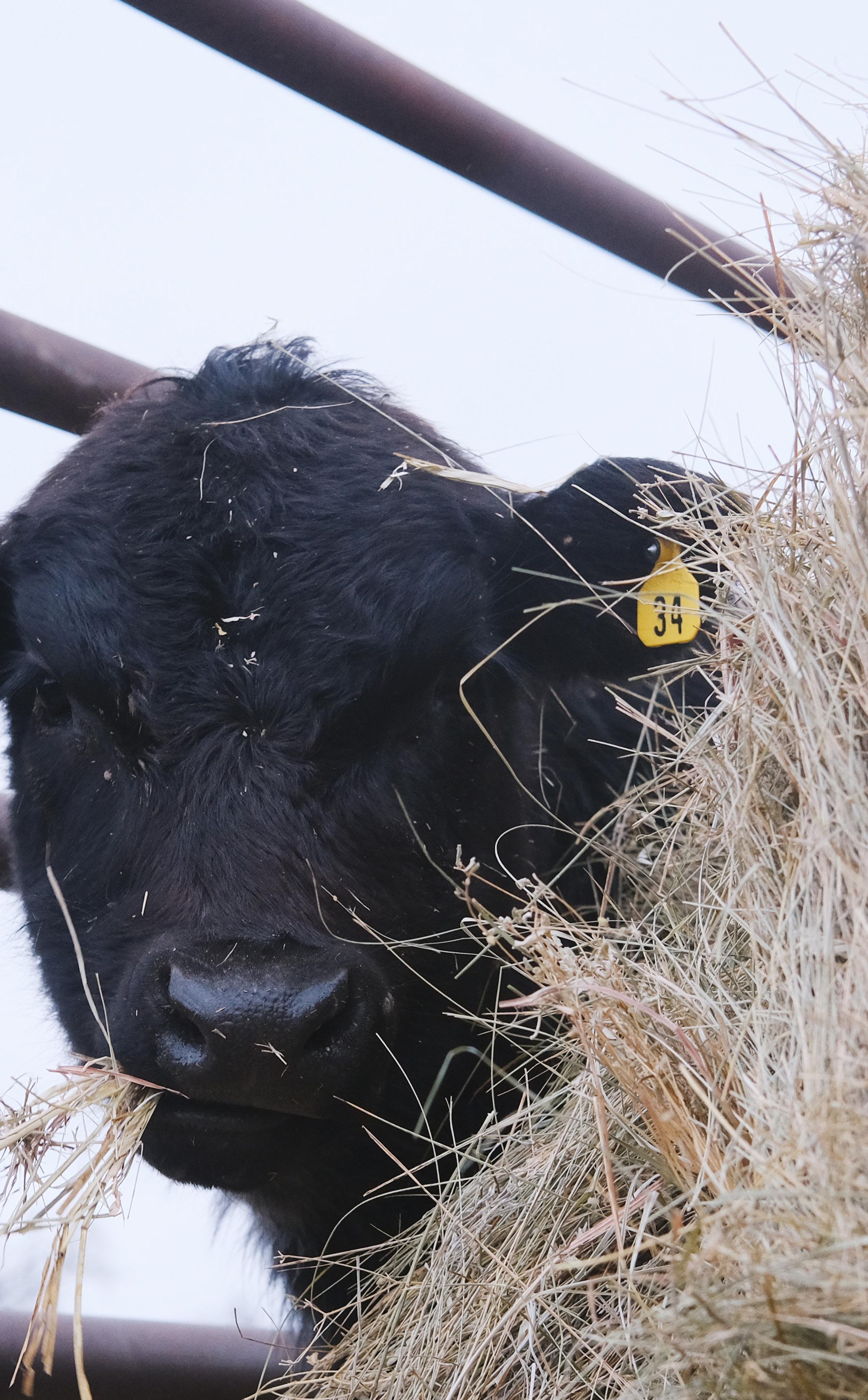
Dan Simons, co-owner of Farmers Restaurant Group, was recently a keynote speaker for the Conscious Capitalism CEO Summit in Austin, Texas. Dan’s presentation was about prioritizing mental health in the workplace and ways leaders can embrace vulnerability to build connections with their teams, better operationalize mental wellness, and unleash the full capacities of their team members.
Conscious Capitalism is a nonprofit organization made up of CEOs, founders, and presidents dedicated to elevating humanity

through business. The Conscious Capitalism CEO Summit is a premier, invitation-only experience for these conscious capitalists to gather, learn, and grow alongside one another by engaging in several opportunities for collaborative learning, purposeful connection, and deliberate planning for the future of conscious business.
A video of Dan’s full presentation is available at https://www.dansimonssays.com/post/ creating-value-by-prioritizing-mental-health-atwork.


Did you know that farmers and ranchers receive only 14.3* cents of every food dollar that consumers spend?

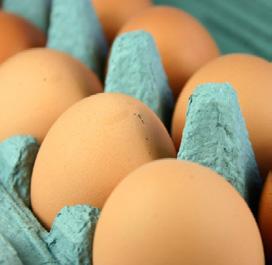

According to the USDA, off farm costs including marketing, processing, wholesaling, distribution and retailing account for more than 80 cents of every food dollar spent in the United States.

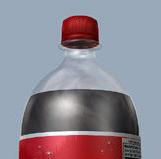
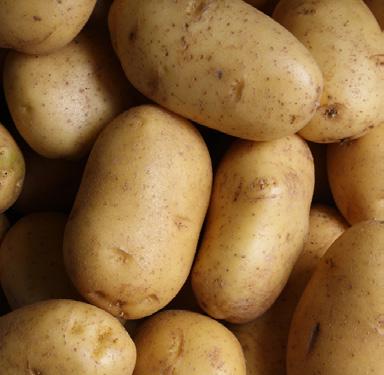
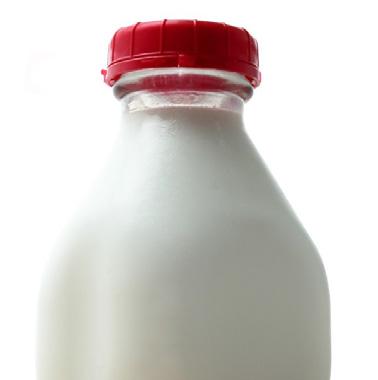
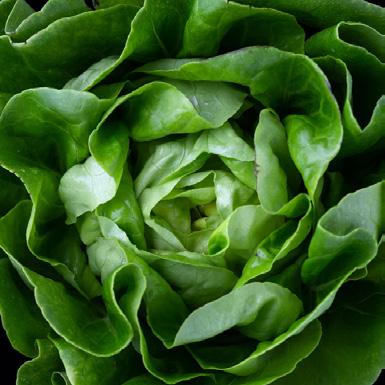
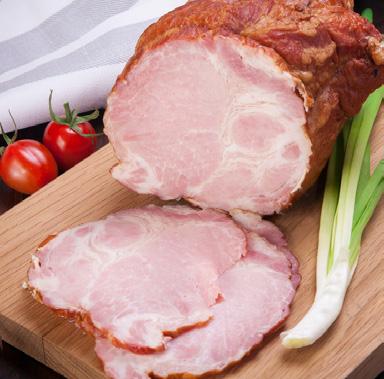

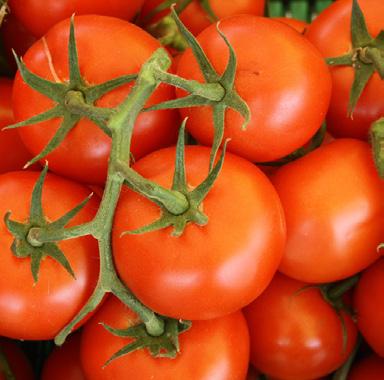




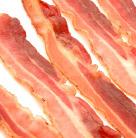



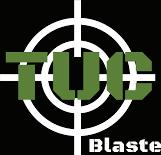
Ads must be submitted through the online form at www.ndfu.org. Click “Classifieds” at the very bottom of ndfu.org and fill out the online form. Ads must be re-submitted each month. No exceptions! Deadline is the 15th of every month. Limit 75 words.
MEMBERSHIP DUES MUST BE CURRENT!


CULTIVATOR, used Koehn 8-row Danish tine cultivator, 30 inch rows, adjustable, 3 pt. hitch, depth wheels, stand, sway disks on ends. $250 OBO. 701-952-8973, Glen Nagel, Jamestown.
SEMI-VAN WATER TRAILER, spray parts, 20 and 40 ft containers for storage. Call for details. 701474-5780, Richard Rydell, Fairmount.
GENERATOR, Powerhorse 2500w generator. New, never used, $325. 701-297-9634, Larry Lampl, West Fargo.
TILLAGE TOOL, JD 1610 Chisel Plow Converted to Vertical Tillage Tool. 40’, several new hoses, new lift cylinder, good tires, lots new bearings. Call for info or pictures. $15,000 OBO. 701-3215711, John Kempf, Ashley.
BALE FEEDERS, 2 large round bale feeders, made with grader blades, very sturdy. 701-2020400, Ron Monzelowsky, Bismarck.
TWO STEEL BINS on cones w/aeration fans; Bourgault knock on cultivator sweeps; Used Case IH 8230 feeder chain; combine pickup guards/lifters; 3 triangular grain auger hoppers w/straps/chains to fasten onto grain auger; old front tine rototiller; Simer water pump; farm scale/steel wheels; used 16” JD cultivator shovels/spikes; 4x8’ wooden stone boat; John Blue anhydrous nitrolator w/hyd shut off/hoses. 701-629-9003, Doug Halden, Stanley.
FOR SALVAGE, D-6 Caterpillar with dozer, $3,000. Tox-O-Wick grain dryer $500. 1976 Mercedes Benz to be restored 300 Diesel $2,500. 701-845-3594/701-373-5480, Donald Jorrisen, Valley City.
CRAFTSMAN 3 TON FLOOR JACK; Pair of car ramps, 4 support jacks; Marquette arc electric farm welder, helmet, cables, and rods; CH electric wire welder, new not opened; 3/4 in socket set and additional 3/4 in impact sockets; Propane weed wand, tank; Buddy Flex - Mr. Heater fish house propane heater, 8,00011,000 BTU, new not opened. Most items new to excellent condition. Make reasonable offers. 701-838-5014, Donald Eliason, Minot.
350 NH GRINDER/MIXER with drag auger works good $3400. 510 Walinga grain vac. good shape $4500. 456 NH 9 ft. mower recondition, field ready $3400. Vermer 256 bail processor good shape $6600, can deliver. 701-400-5742, Gerald Miller, Mandan.
TRACTORS; IH 706 on up; JD 4520, 4620, 5010, 5020, 6030, others; MM’s 950’s on up; Olivers, 1964 on up. AC’s 200, 210, 220, D-21, others. Most tractors 1965 on up, running or not. 701628-2130, Jerry Lumley, Stanley.
PLOW/BLADE, plow and underneath blade for 1948 Farmall Cub. 701-438-2752, Verdale Anderson, Heimdal.
1963 CORVETTE PARTS, rear diff, rear composite spring, driveshaft, short shafts, sway bars. trac bars front disc brakes, battery tray, clock lens new, shift boot and retainer, exhaust center hanger, transmission mount, parking brake handle and cable, fuel tank with neck and cap, sill plates, QA1 shocks, steering gear box, steering rack and more. 701-238-8611, Jim Jondahl, Fargo.
HOUSE in Stanley. Call or text. 701-629-9937, Lori Lefor, Stanley.
MAGAZINES, ND Outdoors, from 1985-2022. All in good condition. Best offer. 701-789-1117, Bill Rahlf, Sutton.
GUNS, Remington 870 12 gauge 21” barrel home defense shotgun. not fancy but excellent condition. Just like new. $400; Colt miniature SSA revolver. Completely functional but non firing. Made in 1988, beautiful wood case, original shipping box and paperwork. Perfect to start or add to a mini-Colt collection. $950, can send pictures. May consider trades. 30 miles north of Williston. 701-580-3357/701-6944621, Martin Hanson, Zahl.
SHAMPOOER, Kirby vacuum shampooer, G5 series; Brass mesh firegate for fireplace; women’s bowling ball; men’s bowling ball; Antique kerosene lanterns. 701-263-1206, Lathan Romsos, Bottineau.
ANVILS, 120 and 100 pound, and a nice post vice. Old metal telephone booth, 2 pop machines: Coke upright bottle machine and 7 UP slider bottle machine, and one Pennzoil cast iron sign base. 701-220-5746, Val Ganje, Bismarck.
1956 CHEVROLET 3100, short bed, small window, 327ci, 3 on the tree with overdrive located in CA $13,000; 1965 Chevrolet C10 Long bed 283ci 4 speed located in ND $8500. 707-425-7315, Vernon Buchmann, Fairfield, Calif.
15-30 MCCORMICK TRACTOR, 1 new tire LT245-75R-Load Range E. 2- Cream Separators, four-wheel steel running gear, 1 Covered Wagon Running Gear, 12’ Kirschman Drill, 1 Horse Potato Cultivator, 4 Btm. Pony & Packer. Email: larryn@westriv.com. 701-548-8020, Larry Nagel, Shields.

OLD STUFF, looking for old out of service, ND Highway Patrol Sign, Indian Head Road Signs, or ND shield shaped US highway signs. Signs advertising gas/oil, soda pop, and farm machinery etc. ND license plates car and motorcycle. Advertising items like crocks, jugs, thermometers, calendars, pens, and ND small town tokens. ND picked arrowheads or anything else that’s old and interesting like gas pumps, traps. 701-220-5746, Val Ganje, Bismarck.
OLD CHAINSAW, Homelite and/or parts. 707425-7315, Vernon Buchmann, Fairfield, Calif.
PRAIRIE DOG HUNTERS to hunt on my land. Make reservations now. Email: larryn@westriv. com. 701-548-8020, Larry Nagel, Shields.

McIntosh County Farmers Union donated NDFU children’s books to the first-graders at Wishek Public School. MCFU also donated books to the schools in Ashley and Zeeland.


